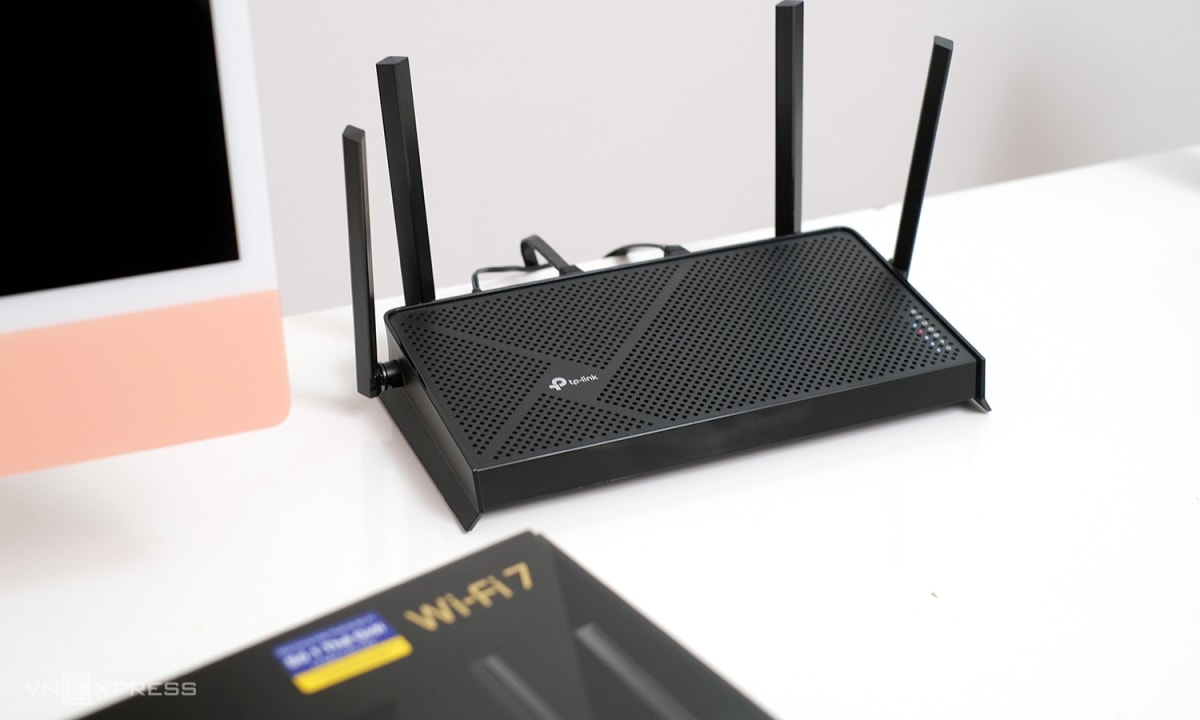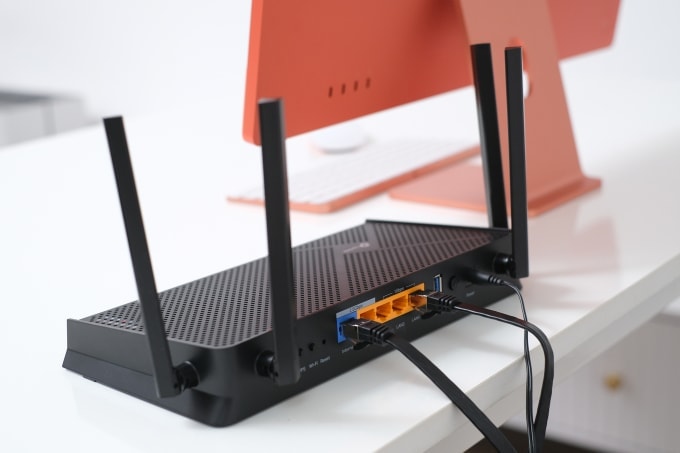Routers using Wi-Fi 7 technology have started selling in Vietnam, but this could be an investment for the future because Wi-Fi 6E is still good enough.

In early August, TP-Link was the first company to sell routers supporting Wi-Fi 7 technology in Vietnam, with the Archer BE230 model using the BE 3600 dual-band wifi standard, supporting Easy Mesh and many other features. Next, VNPT also introduced the latest "made in Vietnam" wifi standard router, XGSPON. However, many users are wondering whether buying Wi-Fi 7 devices at this time is really necessary when even Wi-Fi 6E devices are not yet popular.
What is Wi-Fi 7?
Wi-Fi 7, the successor to Wi-Fi 6E, still operates on the 2.4 GHz, 5 GHz, and 6 GHz bands like its predecessor, but improves on everything by providing more potential bandwidth (for faster download speeds), grouping connections between bands (for increased stability), and using a variety of signal-tuning tricks to handle congestion.
The latest wifi technology is developed based on the IEEE 802.11be standard. In which, "be" is to distinguish it from the previous generation, such as Wi-Fi 5 is 802.11ac, Wi-Fi 6 is 802.11ax. The name also shows that Wi-Fi 7 is an upgrade of Wi-Fi 6, not necessarily a completely new technology. According to this standard, the maximum speed reaches 30 Gb/s, three times higher than the 9.6 Gb/s of Wi-Fi 6 and nearly 10 times the 3.5 Gb/s of Wi-Fi 5. This is also the basis for many experts to expect the new generation to replace Ethernet wired networks.
The new standard also introduces the ability to experience 8K quality video, but this is not a huge difference. Currently, video content is mainly played in Full HD, 2K, 4K, and even when 8K becomes popular, routers that support up to Wi-Fi 6 or 6E still solve this problem well.
Is Wi-Fi 7 really faster?
According to Intel, a laptop with Wi-Fi 7 can provide a maximum potential connection speed of 5.8 Gbps. Experts say that even half of that number is more than enough for the average user.
The secret to the new standard's speed is the broadband channel size, which is simply the "pipe size through which data flows." Wi-Fi 7 doubles the channel size to 320 MHz, compared to 160 MHz on routers that support Wi-Fi 5, 6, or 6E. The wider "pipe" allows more data to flow through it.
The new technology also supports the ability to combine multiple bands into a single connection (Multi-Link Operation or MLO). In theory, if a user downloads a file at 1 Gbps on the 6 GHz band and 700 Mbps on the 5 GHz band, MLO adds up to 1.7 Gbps. And if one of the connections drops for any reason, the device will continue to operate on the remaining band.
Wi-Fi 7 is useful in the smart home trend

Smart home is a growing trend in recent times, but current connected devices often "lag" and become unresponsive due to unstable wireless connections in the home and the presence of multiple devices. This can be handled with the characteristics of Wi-Fi 7.
One of the biggest drawbacks to wireless communication today is airtime. If the router is “busy” with one or more devices (the number and quality of which depends on the standard being used), other devices that want to connect and respond have to wait their turn. So when smart devices in your home suddenly slow down, there’s a good chance they’re “queuing” for a response.
Wi-Fi 7 addresses this problem by adding data to the network waves using OFDMA technology. Wi-Fi 6E has a similar feature, but interference can prevent routers and devices from using these network waves. Wi-Fi 7 ignores the signal interference and puts the rest of the data into clear bits (units of information). This "skipping" process can be visualized as the phenomenon of water flowing around a rock blocking it, going around it and continuing to enter as it originally did behind the obstacle.
However, OFDMA is not backward compatible with older devices, so when a Wi-Fi 7 router encounters a smart device using a lower standard (e.g. Wi-Fi 4), it will have to respond according to its own conditions. At this point, the device will return to the queue to wait its turn. In short, Wi-Fi 7 will solve the efficiency of smart home devices, but on the condition that they must be new devices.
Buy a Wi-Fi 7 router now?
Mesh systems are currently considered the optimal way to cover the living space with wireless Internet connection, but they rely on a single connection to transmit. When that band is congested, the router is forced to switch to another band, thereby affecting the data throughput on the system. Wi-Fi 7 networks with MLO can freely switch between bands, providing a seamless experience, without noticing a connection loss on a certain band on the system.
With MLO and OFDMA, users also experience less network lag when using Wi-Fi 7. With the ability to connect and fuse multiple bands at the same time, and adjust the signal to ignore interference, the connection quality will be smoother than with older technologies.
If you are looking to buy a new wifi router, you should choose Wi-Fi 7 because it is an investment for the future. Meanwhile, if you still have a router using Wi-Fi 6 or 6E, you do not need to upgrade.
For those who want to build a smart home system, a Wi-Fi 7 router is a must-have device because of its optimized features for this platform. IoT devices from various manufacturers have also started supporting the new standard since this year. Routers like the TP-Link Archer BE230 are capable of handling many smart devices, have low latency, and cost around 2.6 million VND, not significantly higher than Wi-Fi 6E in the same segment.
TH (according to VnExpress)